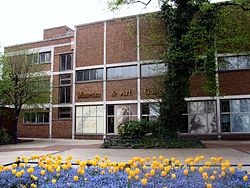
Erasmus Robert Darwin was an English physician. One of the key thinkers of the Midlands Enlightenment, he was also a natural philosopher, physiologist, slave-trade abolitionist, inventor, freemason, and poet.

The Lunar Society of Birmingham was a British dinner club and informal learned society of prominent figures in the Midlands Enlightenment, including industrialists, natural philosophers and intellectuals, who met regularly between 1765 and 1813 in Birmingham. At first called the Lunar Circle, "Lunar Society" became the formal name by 1775. The name arose because the society would meet during the full moon, as the extra light made the journey home easier and safer in the absence of street lighting. The members cheerfully referred to themselves as "lunaticks", a contemporary spelling of lunatics. Venues included Erasmus Darwin's home in Lichfield, Matthew Boulton's home, Soho House, Bowbridge House in Derbyshire, and Great Barr Hall.

Joseph Wright, styled Joseph Wright of Derby, was an English landscape and portrait painter. He has been acclaimed as "the first professional painter to express the spirit of the Industrial Revolution".
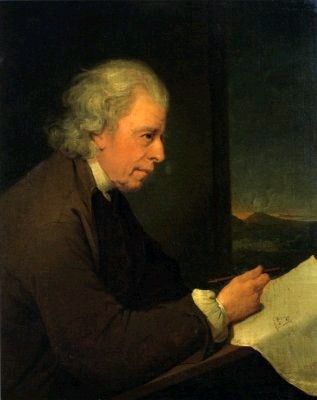
John Whitehurst FRS, born in Cheshire, England, was a clockmaker and scientist, and made significant early contributions to geology. He was an influential member of the Lunar Society.
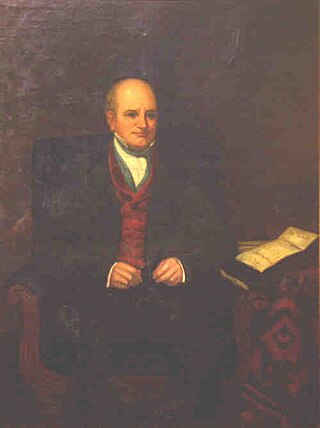
Joseph Strutt (1765–1844) was an English businessman and philanthropist, whose wealth came from the family textile business. A native of Derby, Strutt was a radical social reformer who made significant donations and founded several important institutions in the town, including donating the land for the creation of Derby Arboretum, England's first urban public park. He twice served as Mayor of Derby.
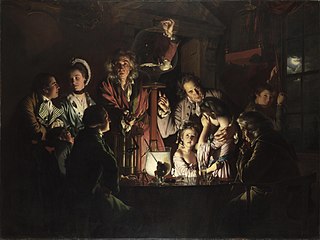
An Experiment on a Bird in the Air Pump is a 1768 oil-on-canvas painting by Joseph Wright of Derby, one of a number of candlelit scenes that Wright painted during the 1760s. The painting departed from convention of the time by depicting a scientific subject in the reverential manner formerly reserved for scenes of historical or religious significance. Wright was intimately involved in depicting the Industrial Revolution and the scientific advances of the Enlightenment. While his paintings were recognised as exceptional by his contemporaries, his provincial status and choice of subjects meant the style was never widely imitated. The picture has been owned by the National Gallery in London since 1863 and is regarded as a masterpiece of British art.

A Philosopher Lecturing on the Orrery, or the full title, A Philosopher giving that Lecture on the Orrery in which a lamp is put in place of the Sun, is a 1766 painting by Joseph Wright of Derby depicting a lecturer giving a demonstration of an orrery – a mechanical model of the solar system – to a small audience. It is now in the Derby Museum and Art Gallery The painting preceded his similar An Experiment on a Bird in the Air Pump.

Peter Perez Burdett was an 18th-century cartographer, surveyor, artist, and draughtsman originally from Eastwood in Essex where he inherited a small estate and chose the name Perez from the birth surname of his mather, his maternal grandfather was the clergyman there. He would have been notable just for his many appearances in Joseph Wright's pictures but he was also involved with numerous projects including surveying the route for one of the major projects of the industrial revolution, the Leeds and Liverpool Canal, in 1769. He has been described as "if not in the centre at least in the penumbra of the Lunar Society of Birmingham". He spent the last years of his life in Karlsruhe, avoiding debtors, but still active in German society. His German daughter married a Count.

Sir Brooke Boothby, 6th Baronet was a British linguist, translator, poet and landowner, based in Derbyshire, England. He was part of the intellectual and literary circle of Lichfield, which included Anna Seward and Erasmus Darwin. In 1766 he welcomed the philosopher Jean-Jacques Rousseau to Ashbourne circles, after Rousseau's short stay in London with Hume. Ten years later, in 1776, Boothby visited Rousseau in Paris, and was given the manuscript of the first part of Rousseau's three-part autobiographic Rousseau Judge of Jean-Jacques. Boothby published it in Lichfield in 1780 after the author's death, and donated the document to the British Library in 1781.

The Derby Philosophical Society was a club for gentlemen in Derby founded in 1783 by Erasmus Darwin. The club had many notable members and also offered the first institutional library in Derby that was available to some section of the public.

The Midlands Enlightenment, also known as the West Midlands Enlightenment or the Birmingham Enlightenment, was a scientific, economic, political, cultural and legal manifestation of the Age of Enlightenment that developed in Birmingham and the wider English Midlands during the second half of the eighteenth century.

Romeo and Juliet: the Tomb Scene is a painting by Joseph Wright of Derby, completed by 1790, exhibited in 1790 and 1791, shown in the Derby Exhibition of 1839 in the Mechanics' Institute, and now displayed in Derby Museum and Art Gallery. The painting exhibits Wright's famed skill with nocturnal and candlelit scenes. It depicts the moment in Shakespeare's Romeo and Juliet when Juliet, kneeling beside Romeo's body, hears a footstep and draws a dagger to kill herself. The line is "Yea, noise? Then I'll be brief. O happy dagger!"

Alfred Edward Goodey (1878–1945) was a collector of paintings, prints and photographs, especially those connected with the English Midlands town of Derby.
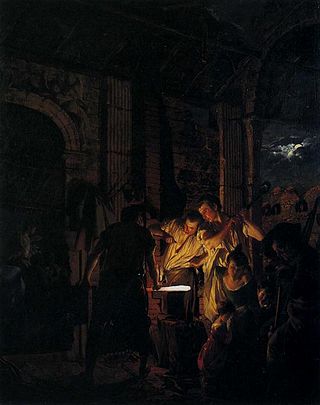
The Blacksmith's Shop is a recurring theme of five paintings by Joseph Wright of Derby. The version in his hometown was originally completed in 1771.

Earthstopper on the Banks of the Derwent is a painting by Joseph Wright of Derby originally completed in 1773. The scene shows a man digging at nighttime beside the River Derwent in Derbyshire.

A Philosopher by lamplight is a painting by Joseph Wright of Derby. It is not known when Wright painted the picture, but it was first exhibited in 1769 in London with the Society of Artists. This was one of the earliest of many lamplight or candlelight paintings and portraits for which Wright is famed.

Three Persons Viewing the Gladiator by Candlelight is a 1765 painting by Joseph Wright of Derby and now resides in the Walker Art Gallery in Liverpool [United Kingdom]. It depicts three men examining a reproduction of the Borghese Gladiator, a famous Hellenistic statue discovered in Italy. The painting was one of the first in Wright of Derby's "Candlelight Pictures" series and was originally exhibited in London, gaining much attention. Four years later a mezzotint of it was made by William Pether.
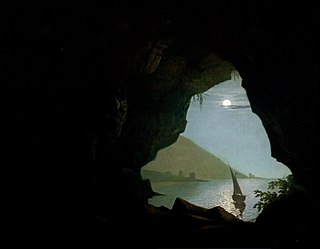
Grotto in the Gulf of Salerno is the subject of at least four paintings completed by Joseph Wright of Derby following his visit there in 1774. The paintings show the different lighting at different times of the day.

St Wystan's Church is a Church of England parish church in Repton, Derbyshire, that is famous for its Anglo-Saxon crypt which is the burial place of two Mercian kings. The church is recorded in the National Heritage List for England as a Grade I listed building, and is dedicated to the Anglo-Saxon Saint Wystan, who was formerly buried within the church's crypt.

Two Girls Dressing a Kitten by Candlelight is a "fancy painting" by Joseph Wright of Derby (1734–1797). The painting is displayed at the Kenwood House Public Museum, located in the London Hampstead area.
